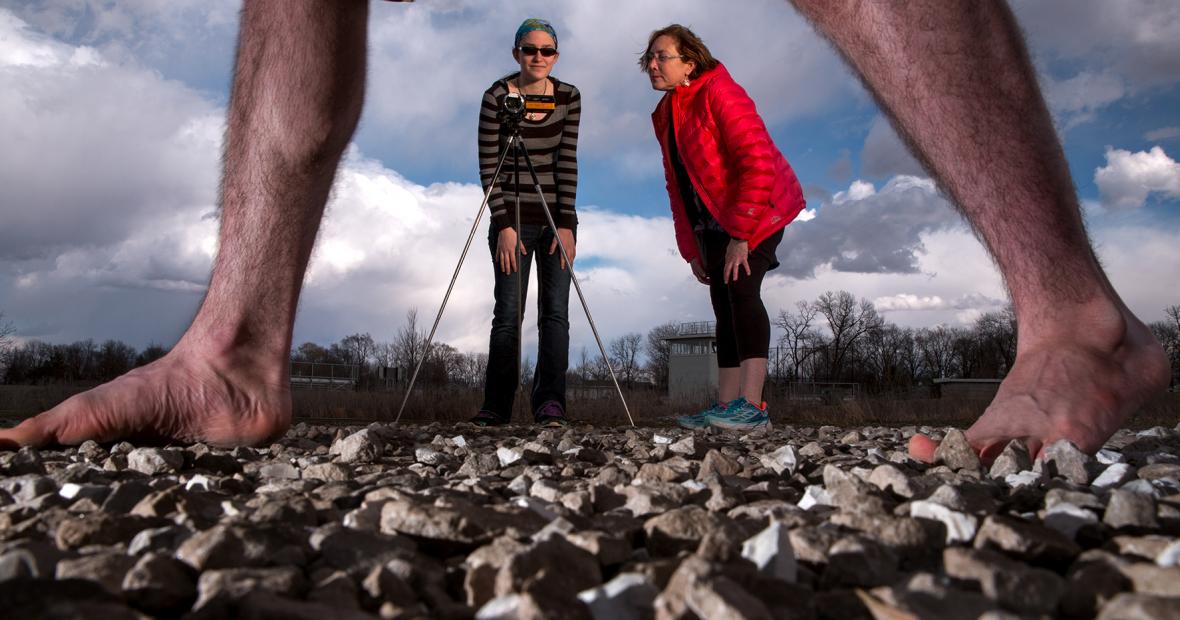Learning How Science Is Actually Done
By design, students gain the skills to investigate life
Bio 150 is not your humdrum beginning biology course. Known formally as Biology 150 Introduction to Biological Inquiry, it is a headlong dive into the ways of science.
The course’s semester-ending poster session is more like a house party than a toilsome trudge up a mountain of facts. It’s a loud and lively exchange among students suddenly awakened to a universe of questions. It’s where students learn to talk to each other — as scientists.
A workshop-style class with no textbooks, Bio 150 kicks off with reviews of scientific literature and key lectures. During the next six weeks, laboratory assistants help students get familiar with lab materials, lab protocol, and the essentials of experimental design.
Then the real fun starts. Students formulate questions, propose their own research projects, design their own experiments, and interpret and report the results.
Springboard for Ideas
“Projects have to be based on what’s in the primary literature,” says Liz Queathem, senior lecturer in biology and professor of the Bio 150 section on animal locomotion. “Students read papers that scientists have published in professional journals, and then they try to use those as a springboard for ideas to explore in their own research.”
Queathem says students are encouraged to generate new knowledge. “If students find a paper that is really interesting to them, I try to get them to think of some twist on it that would be different enough to justify doing it, as if they were writing an actual grant proposal,” Queathem says.
It all comes together at the poster session in Noyce Science Center, where teams from the semester’s four course sections present their methods and findings to each other. Even former Bio 150 students show up to review the projects.
Designing a Project
Rachel Sutter ’20 and her team got interested in the trend of barefoot running and what happens to the whole body when people encounter various types of hard surfaces.
“People think it’s healthier to run without shoes than with shoes, and there is some debate on that,” Sutter says during the poster session. “We found a study that correlated [foot] pain with increased injury to other parts of the body, because you change the way that you’re moving to try to compensate for the pain in the feet.”
Sutter and her research partners designed a project titled “Effects of Surface Substrate on Human Kinematics” to study human subjects both running and walking on a gravel surface versus hard tile. They captured image sequences of their subjects from various sides and used computer software to measure the joint angles.
“Generally we found that on gravel the maximum angles were significantly smaller,” Sutter says. “Also, shoulder angles were much greater on gravel because the gait response was generally to drop the shoulders up and out. The differences were profound in running, but there were still some differences in walking.”
Bottom line, Sutter says, “Your gait does indeed change, and people need to be aware of it if they want to run barefoot on surfaces that aren’t necessarily nice like a track.”
How Science Is Done
Sutter says she enjoyed her first experience with college biology. “I liked the class,” she says. “We did a lot of different stuff. It was really fun to actually do research instead of just hear about it.”
Elsewhere at the Bio 150 poster session the Noyce atrium is abuzz with talk of research on everything from the sex life of plants to how nerve cells communicate. Amid the din of student voices Queathem says, “This is how science is done. It’s how actual biologists do biology.
“And that’s the point — to teach students the skills instead of having them memorize a bunch of facts.”
Rachel Sutter ’20 is a first year student from Fort Wayne, Indiana.

